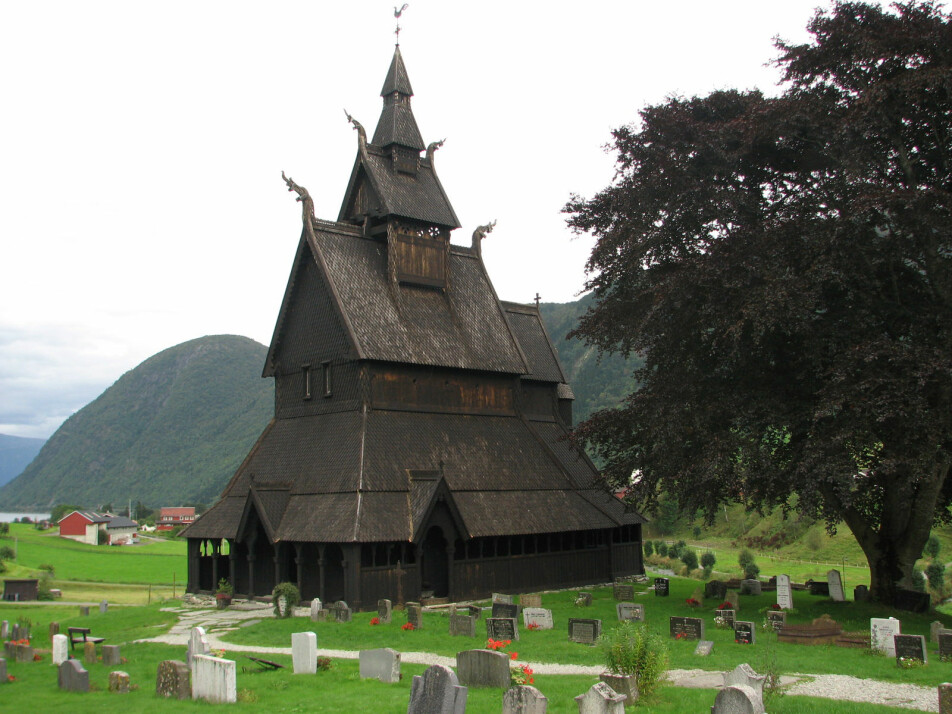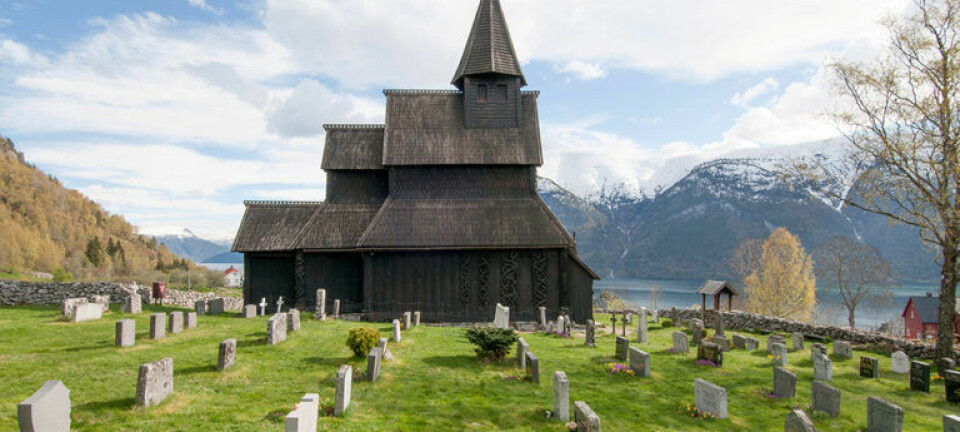
Norway’s wooden stave churches are a demanding heritage to maintain
Only 28 of Norway’s unique stave churches remain. Maintaining them presents challenges.
There’s no guarantee that these old churches will continue to stand. Heddal Stave Church, the largest in the world, almost collapsed a few years ago.
No one knows for certain how old Norway’s stave churches are. Heddal Stave Church was mentioned in writing for the first time in the year 1315. There’s still debate about whether it is older than that.
An important part of maintaining Norway’s cultural heritage is to use traditional methods in maintaining and restoring old buildings. The churches are not to be modernized. But traditional craftsmanship that allowed their construction is about to be forgotten.
This has become a big problem.
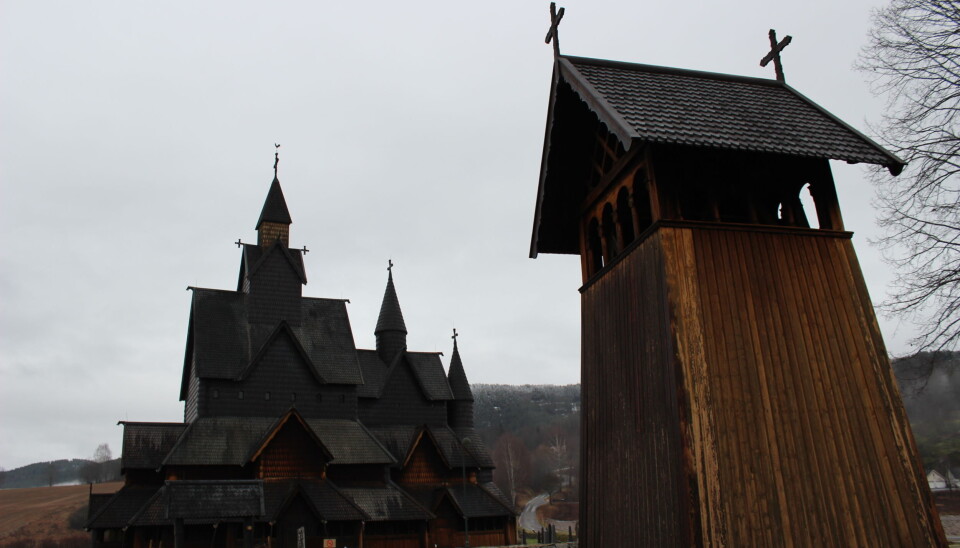
Only 28 left
Once upon a time there were more than 1000 stave churches. Now there are only 28.
But if you compare Norway with Sweden, that’s not so bad. Sweden once had a lot of stave churches, but now there is only one left, according to Ola Storsletten.
He is now retired, but worked as a researcher for many years at NIKU – the Norwegian Institute for Cultural Heritage Research. He has also written a book about the stave churches.
“Norway took good care of its stave churches, partly because Norwegians were poor. We couldn’t afford to demolish an old church and build a new one, even though many people probably wanted to,” says Storsletten.
In the Middle Ages, people stood in the church, or knelt on the floor. Only the old and sick were allowed to sit on benches along the walls. As a consequence, the churches didn’t need to be that big. But after the Reformation, the congregation was supposed to sit on benches, which required larger churches. Many small, older churches were then demolished.

Pole churches
The stave churches are small and built of timber. "Stav" is Old Norse for pole, and refers to the distinctive building tradition in which poles are placed in frames that rest on stones.
This type of construction is complicated and is probably similar to how houses at the time were built, Storsletten said.
Wooden churches were also built before the time of the stave churches. But these structures had poles that had been dug into the ground, which meant the wood rotted quickly, Storsletten said. All these churches are gone.
Around the year 1100, construction methods changed.
“They used a different approach to constructing the structures, where they lifted the whole building off the ground, which has allowed stave churches to survive to this day,” he said.
But there is no guarantee that they are safe.
The ones who know, die
“There are relatively few people who know anything about stave churches today, and that is a real problem. This is one of Norway's few contributions to international architectural history,” Storsletten said.
People who know the old methods of maintaining the stave churches, eventually die, and their knowledge isn’t being passed on to future generations, Storsletten believes.
The Norwegian Directorate for Cultural Heritage has spent a great deal of money renovating stave churches over the past 20 years. Many of them were in poor condition.
Both the great age of the buildings and previous senseless modernization are the reasons behind the problems the churches are experiencing today.
Taken apart
Heddal Stave Church was dilapidated when it was restored and saved in the 1850s. At that time, there was increasing interest in preserving churches from the past.
But the solutions used in the restoration at that time were poor, both technically and architecturally. When completed, the restorations left little that suggested a medieval structure.
As a result, the churches needed another round of restoration 100 years later, in the 1950s.
Ole H. Holta is one of the few left who remembers the rescue operation more than 65 years ago.
“I went to the stave church — which was no longer there! It was open land,” the 96-year-old remembers.
The church was torn apart. The material was sorted. Some of the building materials could be used again, while other parts had to be newly crafted.
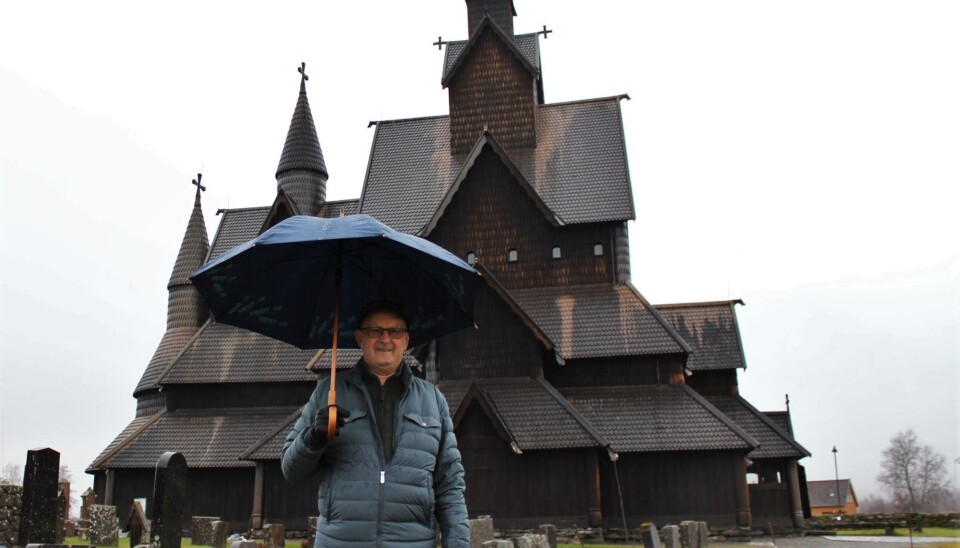
More medieval
Holta's father financed the restoration in 1950. The family owned the cornerstone company in the village and had been involved for many years in working to preserve Heddal Stave Church. Holta said the idea was that the restoration would be done meticulously, from top to bottom.
And not only would the church be solid again, the restorers would also address the poor work from the previous restoration.
The result was a church that is more true to the medieval style.
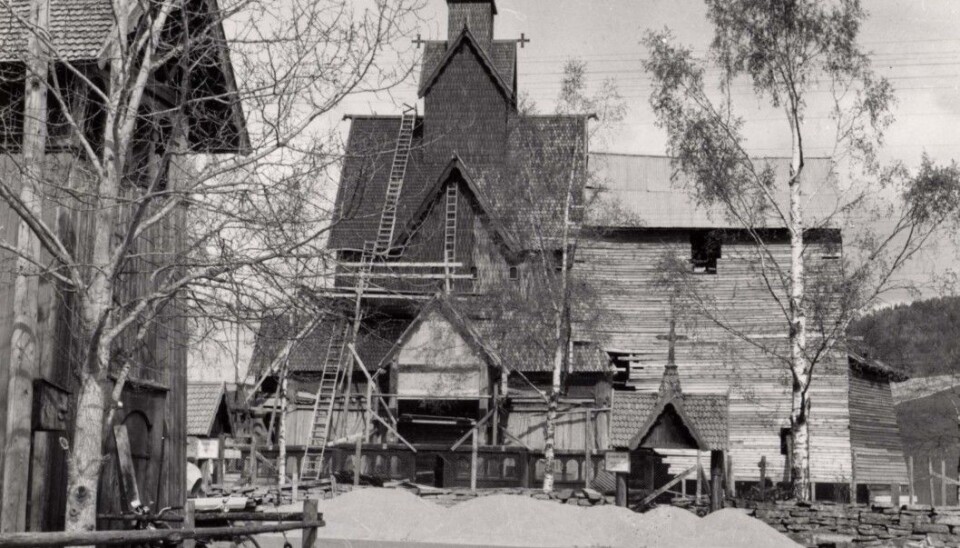
The traditions and knowledge surrounding the maintenance of the building are also an important part of the cultural heritage, says Inger Marie Egenberg. Egenberg is the head of the Conservation Department at the Archaeological Museum, University of Stavanger, and has a doctorate on the tar glazing of stave churches. She was involved in the tarring of Heddal Stave Church in the early 2000s.
Lost knowledge
One of the challenges with painting the church with tar was that the knowledge about how to do it had been lost over the years, says Egenberg. Now she and her colleagues are trying to learn more about the materials and methods that may have been used in pre-industrial times and perhaps all the way back to the Middle Ages.
“There are many ways to neglect a building,” says Egenberg, including improper use of materials and lack of maintenance.
Buildings from the Middle Ages are automatically protected under the Norwegian Cultural Heritage Act. The law assumes that maintenance will be undertaken using original methods, as far as they are known.
Egenberg says that throughout the 20th century, and especially after World War II, there was an explosion of factory products that worked very well and reduced the need for maintenance.
“They started with different stains, paints and creosote. They were all toxic, and it kept pests and everything else away. The problem is that these chemicals are not authentic,” Egenberg said.
Long process
Egenberg believes preserving the knowledge of traditional methods enriches the protection of a nation’s cultural heritage.
The stave churches are tarred, which is more complicated than painting and staining.
Ingmar Kroken from the Notodden church council currently has the main responsibility for the tarring of Heddal Stave Church.
Tar is essentially a kind of wood oil.
“You can make tar from almost all wood. But the Norwegian tradition is to use pine,” says Kroken.
An important criterion for the tar that was used for Norwegian stave churches was that the pine be burnt in a special way, under a cover of turf or something similar, which limits the amount of oxygen that can reach the burning wood. This is a thousand-year-old method.

Tar protects the churches
“It is a huge effort to make tar like this. It requires space, time and lots of facilities, strength, hands-on work and resources,” says Egenberg.
The process can last for several days, and to prevent the spread of the fire, it has to be checked continuously.
When the tar is finished, it has to be applied to the stave church. But how was this actually done during the Middle Ages? When the restoration team first tried to apply the tar, it ran off the walls and ceiling. Egenberg read old documents and found out that they combined coal with tar. That worked.
“The theory is that coal becomes a kind of filter, like sunglasses, for the wood. As long as the coal stays on, it will protect against UV radiation, which breaks down both the wood and the tar film itself,” says Egenberg.
“I am afraid that it may not be possible to get hold of this kind of Norwegian tar, and then we’ll lose so much. The Swedes have almost lost this tradition, so they import wood oil from China. It is a factory-made product that may be just as good, but it is not our culture,” says Egenberg.
Translated by: Nancy Bazilchuk
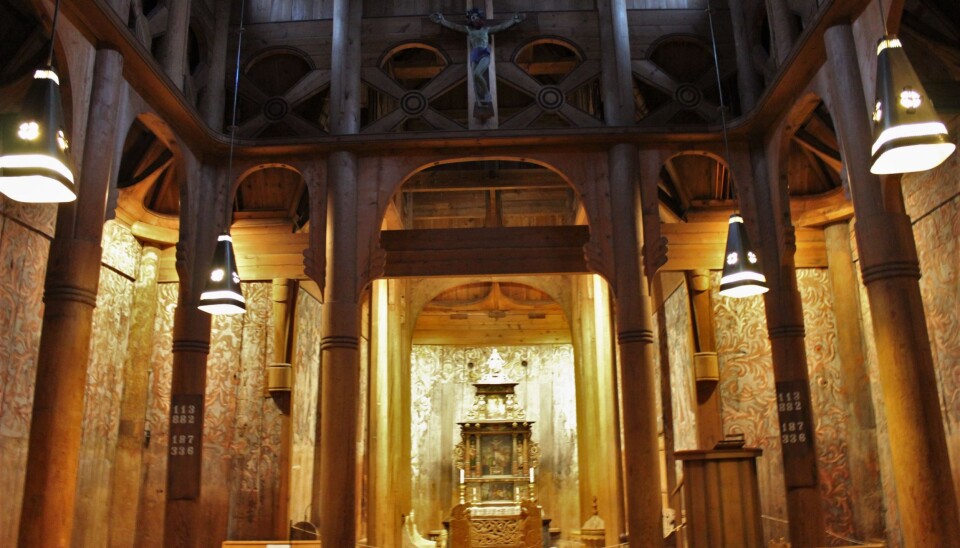
———
Read the Norwegian version of this article on forskning.no.
RELATED







